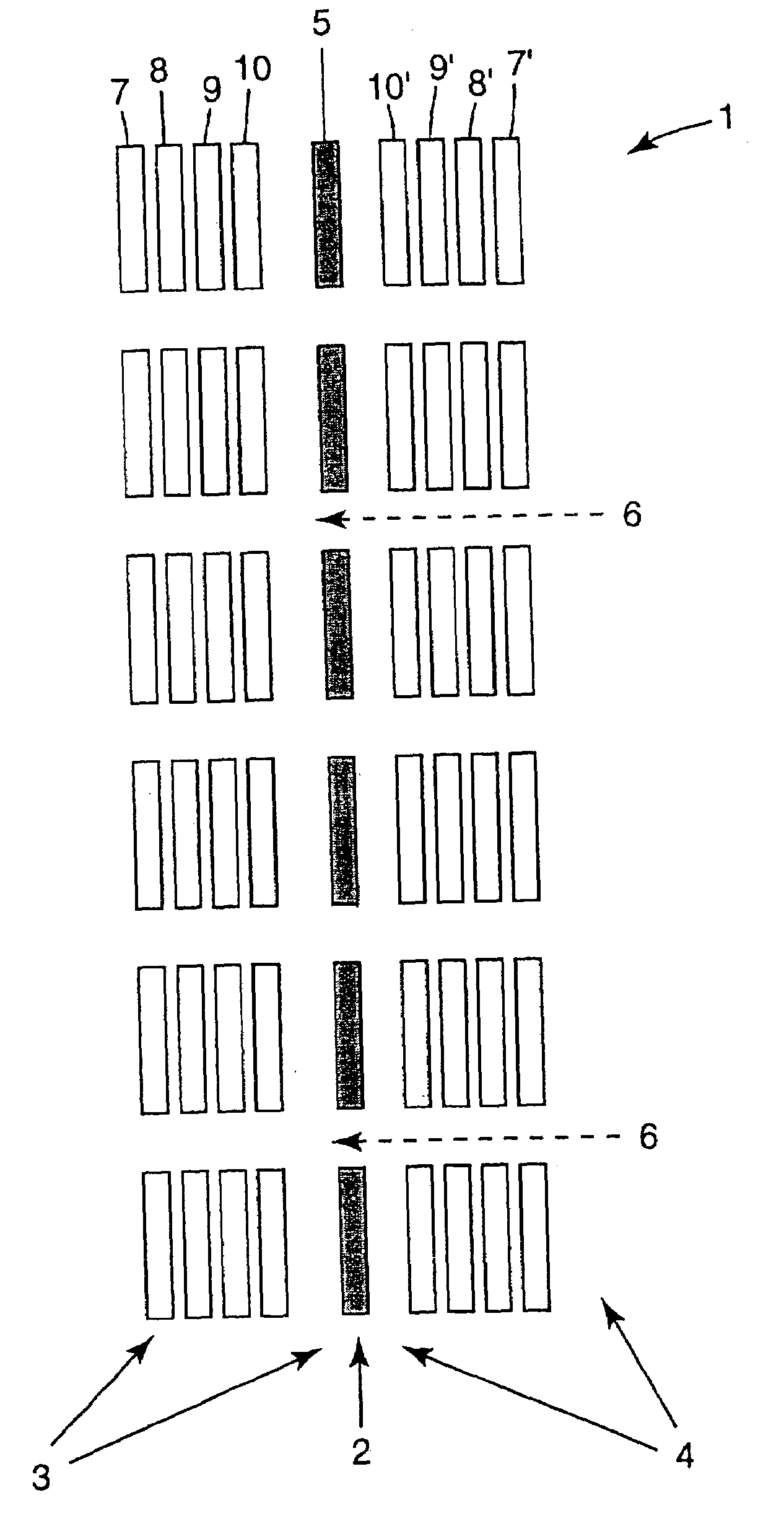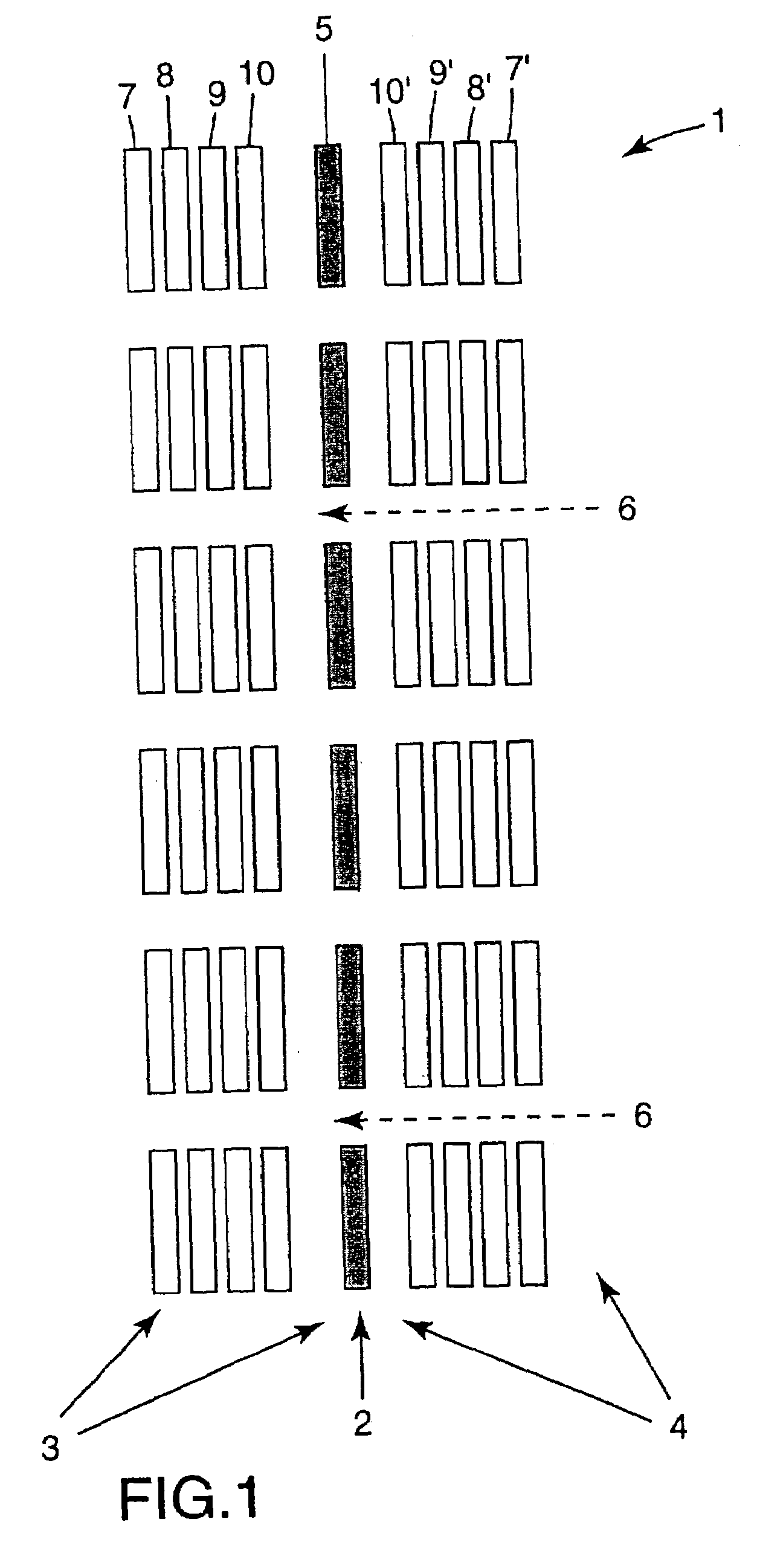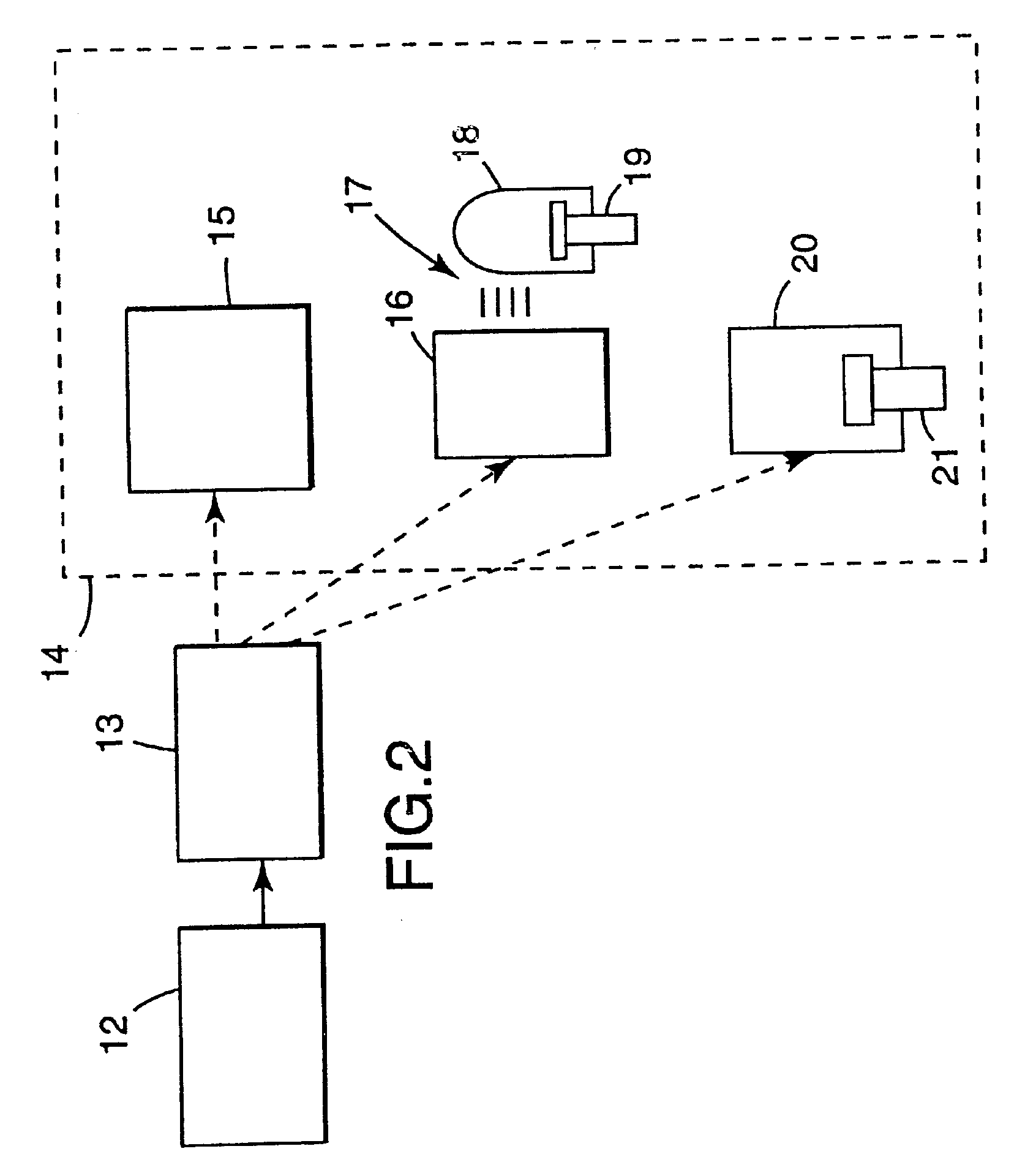Display unit and methods of displaying an image
a technology of display unit and image, applied in the field of display unit, can solve the problems of limiting printing methods to those including inks, affecting the visual effect of both sides, and affecting the effect of cos
- Summary
- Abstract
- Description
- Claims
- Application Information
AI Technical Summary
Benefits of technology
Problems solved by technology
Method used
Image
Examples
first embodiment
[0068]FIG. 2 shows a schematic block diagram of the present invention. A suitable graphics image for display purposes is generated in image generation means 12. The image may be generated using computer 13 and special software developed for production of graphic images such as Adobe Photoshop™, Adobe Illustrator™, Corel-Draw™, Alduso® Pagemaker™, Quark Xpress™ or similar. The image generation means 12 may be a scanner with which all or part of picture information from an image, a picture or photograph is converted point by point into electrical signals to be stored in computer 13 as digital data.
[0069]Once the graphics image has been stored in computer 13 as a matrix of digital data which include sufficient data to determine the luminosity and color of each pixel of information, the data may be prepared such that it may be displayed with a plurality of transparent areas 6 within the graphics image.
[0070]In accordance with the present invention this may be done in several different w...
second embodiment
[0089]A direct or simultaneous display device 15 in accordance with the present invention is a display device which displays at least the image directly from the electrical output of the computer 13 and combines this with the silhouette pattern 2 so that the transparent areas 6 of the silhouette layer 2 are in registry with the transparent areas of the image. Such a direct display device 15 in accordance with the present invention is shown schematically in FIG. 6. A conventional LCD display 24 is addressed by an addressing unit 28 which is connected to the computer 13 in the conventional way e.g. by means of cable and connector 29. The LCD array 24 may form part of a window. Behind the LCD array 24 is placed a back-light or reflector 25 which has a light source 26 connected to a suitable power supply (not shown) by cable and connector 27.
[0090]The back-light 25 produces illumination in the form of strips, squares, circles or similar shapes separated by areas of transparent material ...
third embodiment
[0096]Alternatively, the display device 14 in accordance with the present invention may be an indirect printing device 16–19.
[0097]An indirect printing device in accordance with the present invention is a printing method with which there is sequential colorant transfer of individual color-separated images from intermediate image carriers to the printing substrate. Typically this requires a set of color-separated, i.e. single primary color, intermediate image substrates 17 which are used in printing device 18 to produce the final printed image 19. The intermediate imaged substrates 17 are produced from the computer output data in the intermediate imaging device 16. Such an indirect printing method may be for example lithographic or screen printing.
[0098]With reference to lithographic printing, the imaged substrates 17 may be a series of imaged polyester lithographic plates, suitable for lithographic printing on a printing press 18. The lithographic substrates 17 may be generated dire...
PUM
 Login to View More
Login to View More Abstract
Description
Claims
Application Information
 Login to View More
Login to View More - R&D
- Intellectual Property
- Life Sciences
- Materials
- Tech Scout
- Unparalleled Data Quality
- Higher Quality Content
- 60% Fewer Hallucinations
Browse by: Latest US Patents, China's latest patents, Technical Efficacy Thesaurus, Application Domain, Technology Topic, Popular Technical Reports.
© 2025 PatSnap. All rights reserved.Legal|Privacy policy|Modern Slavery Act Transparency Statement|Sitemap|About US| Contact US: help@patsnap.com



